Author: ashleegarrett
Synthetic Shingles, Protecting Our Homes and Our Planet
How Thermoplastics are Transforming the Roofing Industry
Sustainable plastic? Decades of roof protection? YES. And not in some distant future – today.
Thermoplastics are revolutionizing many manufacturing processes through their potential for sustainability as well as their inherent benefits. Consider this quote from the publication, Composites in Manufacturing:
“The universal advantage of thermoplastic resins is that they can be softened and reformed endlessly without major loss of physical properties. Once a thermoplastic product reaches the end of its life cycle, it can be melted and reformed for a new application, decreasing material waste.”
Thermoplastics are also lightweight with excellent strength and durability. Using thermoplastics on the interior sections of a car door, for example, can reduce its weight by half. Even today’s aircrafts are often made of more than 50 percent plastic composite parts. Thermoplastics have rapidly grown to over 40% of all commercial membrane roofs. Now it’s the residential roofing industry’s turn.
Thermoplastics Defined
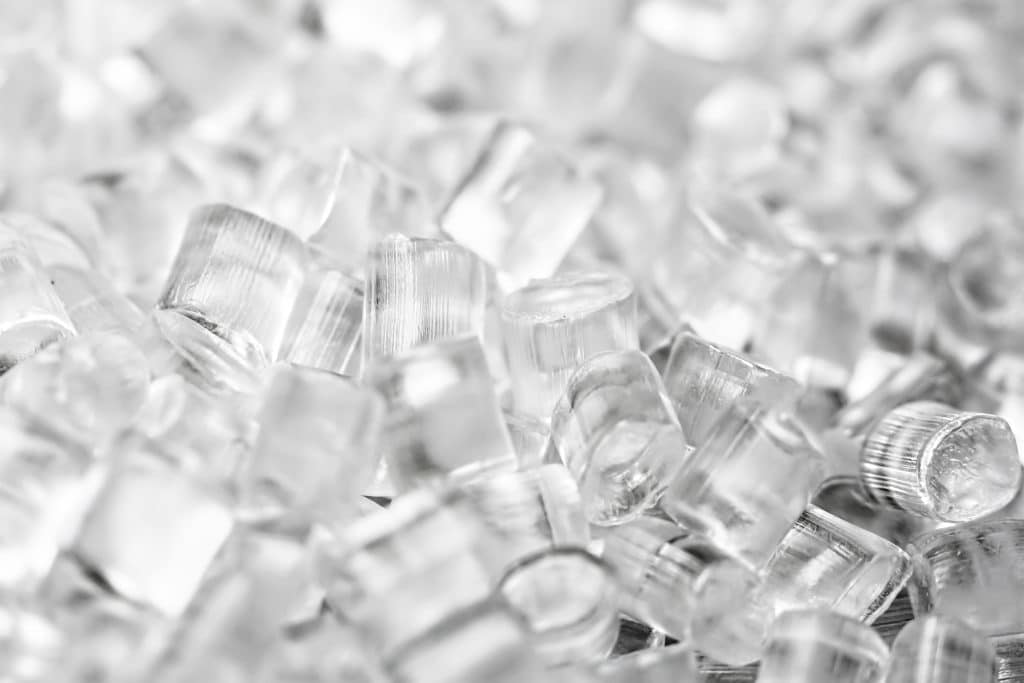
But let’s start at the beginning: what are thermoplastics?
According to ScienceDirect, thermoplastics are a class of polymers (or long, repeating molecules) that can be softened by the application of heat and can then be shaped in either a solid state (by thermoforming) or in a liquid state (by extrusion and injection molding).
F Wave is at the forefront of bringing these processes to the roofing industry. Each of our premium-quality synthetic shingles is manufactured in one whole piece out of a proprietary blend of commercial-grade polymers, which makes them stronger, lighter, and more durable than traditional roofing materials.
Sustainable
According to UNESCO, the concept of sustainable development is that which “meets the needs of the present without compromising the ability of future generations to meet their own needs.”
The common concern with plastics is that millions of tons are made and thrown away every year, leading to higher carbon emissions and glutted landfills – neither of which benefit future generations. But thermoplastics don’t have to contribute to this reputation. According to the publication Sustainable Polymer Composites and Nanocomposites, “Sustainable thermoplastic nanocomposites are of great importance because they possess the potential to resolve concerns on the emission of greenhouse gases, depletion of fossil fuels, and pollution.”
In other words, thermoplastics are one way to reduce our carbon footprint. They reduce the weight of motor vehicles, which significantly increases their fuel efficiency and reduces emissions. As another example, F Wave’s synthetic shingles have been engineered to eliminate unnecessary polymer from underneath the shingle by incorporating reinforcing ribs, making the product thicker and more dimensional on a roof, without adding additional polymer and weight.
Finally, when thermoplastics reach the end of their product life cycle, the energy stored in their chemical bonds can be converted into electricity, synthetic gas, and other fuels. This energy recovery is rapidly becoming another source of renewable energy.
Reusable
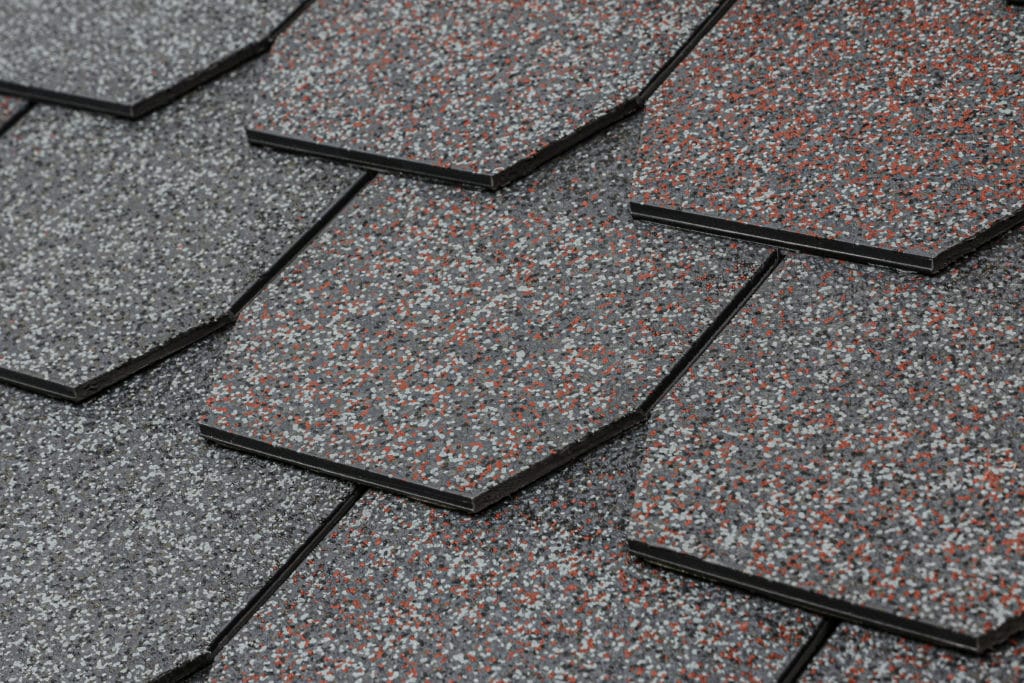
The majority of plastic is formed from petroleum-based compounds made from decomposed organisms that are found naturally in the earth. These compounds can be made into plastic and also into fuel. However, because petroleum is not an endless resource, we must use what we have wisely.
Despite being sourced from natural matter, many plastics are non-biodegradable. However, as mentioned above, thermoplastics are truly reusable – they can be heated and reformed repeatedly without significant loss of physical properties. In addition, recycling thermoplastic roofing into a new roof or an alternative polymer product, is efficient and environmentally friendly. In contrast there are typically over 10 million tons of asphalt shingles sent to landfills each year, and these shingles can take up to 300 years to break down. Don’t take our word for it, read about the environmental issues associated with asphalt shingle recycling.
Strong and Durable
Thermoplastics have a longer service life than other materials because they are less prone to dent, ding, chip, crack, splinter, or fray; they’re also chemical-resistant. If a material is good enough to improve safety and durability in a car or airplane, it’s surely good enough to protect residential property.
F-WAVE® REVIA® Synthetic Roofing Shingles are specifically designed to be wind resistant up to 130 mph with a Class A fire resistance rating and a Class 4 hail impact resistance rating. They are backed with a 50-Year WeatherForce® Advantage Warranty, which includes our unique replacement warranty for damage from hail up to 2″.
Greater Service from Thermoplastics
For all of these reasons, thermoplastics are providing a reusable resource for our planet — and that’s why we’ve engineered our shingles with this particular material.
F Wave uses top-of-the-line, thermoplastic material in our manufacturing process because we want contractors and homeowners alike to receive the full extent of benefits from our synthetic shingles. Explore our collection of REVIA® shingles to discover how sustainable meets strong and stunning. And, check out our YouTube channel to see how F-WAVE® REVIA® shingles perform against 2-inch hailstones, 130 mph winds, and fire.
Posted in Synthetic Shingles
Choosing the Best Roofing Shingles to Use in Texas
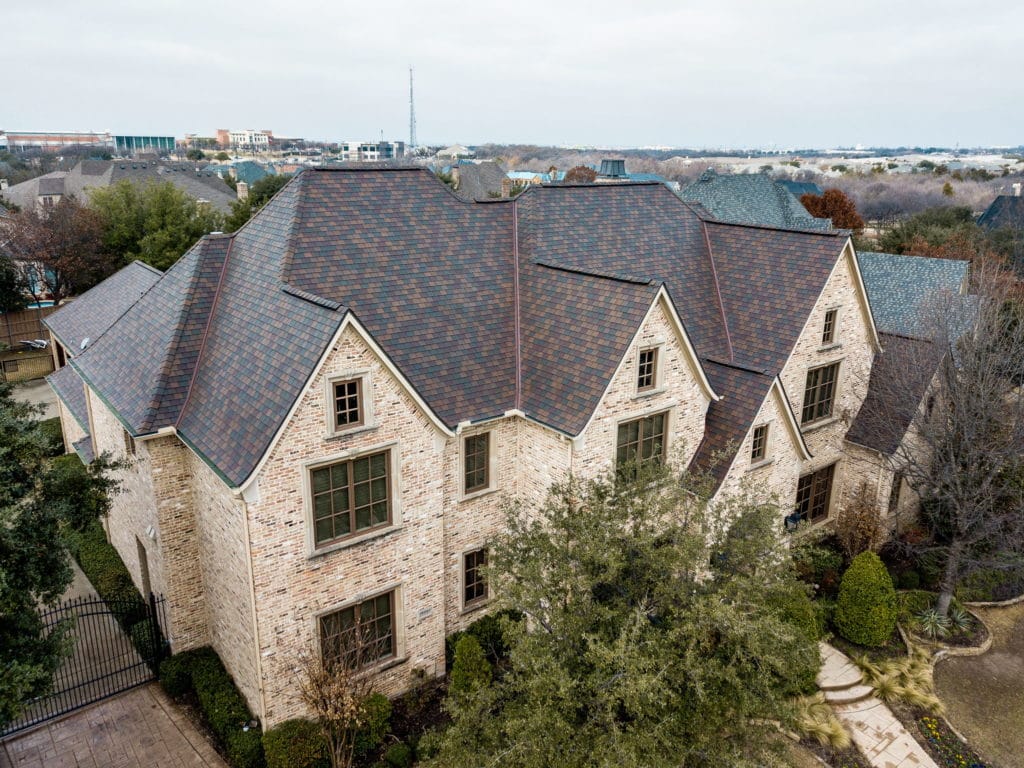
When it comes to the basic parts that make up your home, three areas require serious consideration in terms of protecting your family and investment: the foundation, the walls, and the roof system. The roof system, in particular, is what helps to tie everything together and provides the most protection. Yes, the roof system provides curb-appeal and contributes to the architectural look of your home. But its primary function is to protect your home from the elements and serve as a water-shedding surface to move water away from your walls and foundation, so having a good roof system is essential to the health of your entire house. However, choosing the best roofing shingles for Texas (or any state) can be difficult.
Here is what you should look for in a good roof system and some critical factors to consider:
What to Look for in A Good Roof System
1. Class 4 Impact Resistance
If you live in Texas or any of the other hail prone areas in the United States maybe the most important feature to look for in a good roof is high impact resistance. Even if you live somewhere where you do not get many hail storms, you never know when you’ll get one and it pays to be protected. Ideally, you want to choose a roof with a Class 4 Impact Rating from both UL and Factory Mutual–the highest rating possible from these to agencies. Otherwise, your roof can end up punctured and severely damaged by the next hail storm. Very few roofing product manufacturers provide any warranted protection from hail damage so be sure to read the fine print in your product or roofing system warranty.
2. High Wind Rating
In addition to protecting your home from hail damage, the roof system also has to protect your home from high winds. Wind and storm damage to roofs is one of the leading causes for insurance claims in Texas and surrounding states. Look for a roof system designed to hold up to winds in excess of 100 MPH, and with warranted coverage from blow-off (shingles coming off your house in high winds) up to 130 MPH. Having a high wind rating also means your roof system will provide better protection from wind driven rain.
3. Class A Fire Rating
No that your home is protected from high winds and hail damage, don’t forget about the threat to your house from fire. Many states–including California, Colorado, North Carolina, and even Texas–are prone to damaging wildfires, which can destroy homes. Because of this concern, your home’s roof must be Class A fire rated, so that the home has a better chance of surviving a fire.
4. Moisture Resistance
Moisture creates a big problem for some roofing materials. For one, if a roof is not installed correctly or fails to shed water as designed, water and moisture can enter the roof system and cause issues like mold, mildew, and rot. When algae accumulates on the roof it leads to premature aging of the roof system as well as an unsightly appearance. Once the damage is done moisture can then penetrate the roof system and enter the home, where it can cause much more severe damage, including health related issues. Choose a roofing material that is designed to stand up to constant exposure to moisture on the roof.
5. UV Protection
Sunlight can be nice, but it can also cause serious harm to roofing materials–not just to humans. Over time, exposure to UV rays from the Sun will begin to breakdown roofing materials that have not been designed to withstand UV exposure. Asphalt is one such material and the reason asphalt shingles are covered with rock granules. Once the granules begin to fall off, or are knocked loose by high winds, rain, and hail, the damaging effects of UV exposure is accelerated. Most newer forms of roofing materials are more capable of handling prolonged exposure to UV.
Things to Consider for Texas Roofs
There are a lot of options when it comes to selecting the best roofing shingles for Texas. The most important thing to take into consideration when choosing a roof system is the material that the roofing products are made from. Different materials – like asphalt, polymers, metal, wood, and stone, offer different advantages and disadvantages both upfront and over the life of the roof system.
Consider these five big reasons to carefully evaluate your roofing material options when selecting a new roof system:
1. Durability
Choose a roofing material that is designed to stand up to the elements. That’s everyday UV exposure, high winds and wind-driven rain, resistance to hail impact, and being resistant to algae growth and moisture damage.
2. Maintenance Requirements
Nobody wants to spend time and money maintaining their roof. Materials like real wood shakes and even asphalt shingles require routine and regular maintenance, while synthetic shingles are generally maintenance-free.
3. Installed Weight
Some roof structures are designed to take a lot of weight, others are not. Materials like stone and concrete tiles, and even some metal roofing are too heavy for many structures. Light-weight options include basic asphalt shingles and most synthetic shingle options.
4. Difficulty of Install
Most premium roofing options require very specialized labor to assure an accurate installation. This includes stone tiles, concrete tiles, metal tiles, polymer roof tiles, and even some premium designer asphalt shingles. Most roof leaks are the result of improper installation.
5. Price Installed
The installed price for residential roof systems in Texas range from roughly $325 per square (100ft2 = 1 roofing square) for basic asphalt shingles to over $1500 per square for stone slate and premium metal roofing. Generally, the higher the price the better the durability and the lower the maintenance requirements.
A professional roofing contractor should be able to provide good options to balance all of these considerations.
A Synthetic Roofing Option

No matter whether you live in Texas or another state, an option that will meet everyone’s needs are synthetic roofing shingles. F-WAVE® REVIA® Synthetic Shingles are made from a highly durable, UV resistant, single layer of commercial-grade polymer material that has been engineered to perform on the roof. They offer the highest resistance ratings in every category: Class 4 Impact Rating, Class A Fire rating, and Class F to Class H wind ratings.
REVIA® shingles are also incredibly lightweight and eco-friendly. They offer several distinct styles that mimic the look of traditional roofing materials such as: asphalt shingles, slate tiles, and cedar shakes. They will not easily tear, rip, or puncture. There are no granules or asphalt which means they are designed to have a much longer lifespan than most traditional roofing options.
Your roof is key to protecting your home from the elements, so you need to make the most educated purchase possible. Knowing what to look for in a good roof and what to take into account will allow you to choose the best roofing shingles for your Texas home. REVIA® Synthetic Shingles from F Wave are an excellent option for most homes in any part of the country, with many advantages at an affordable installed price.
Posted in Synthetic ShinglesEverything You Need to Know about Synthetic Cedar Shake Roofing
Over the years, roofing styles and options have changed and evolved. With all of the newly available options, one style has prevailed for centuries: cedar shake shingles. This style of roofing is popular for the beautiful, rustic look it can bring to a home, but it is not an option available to everyone due to the high installation cost, maintenance requirements, and need for a Class A fire rating. Fortunately, there are now several faux cedar shake roofing options available, which allow you to get that rustic look with a more durable synthetic material.
What Are Synthetic Shake Shingles?
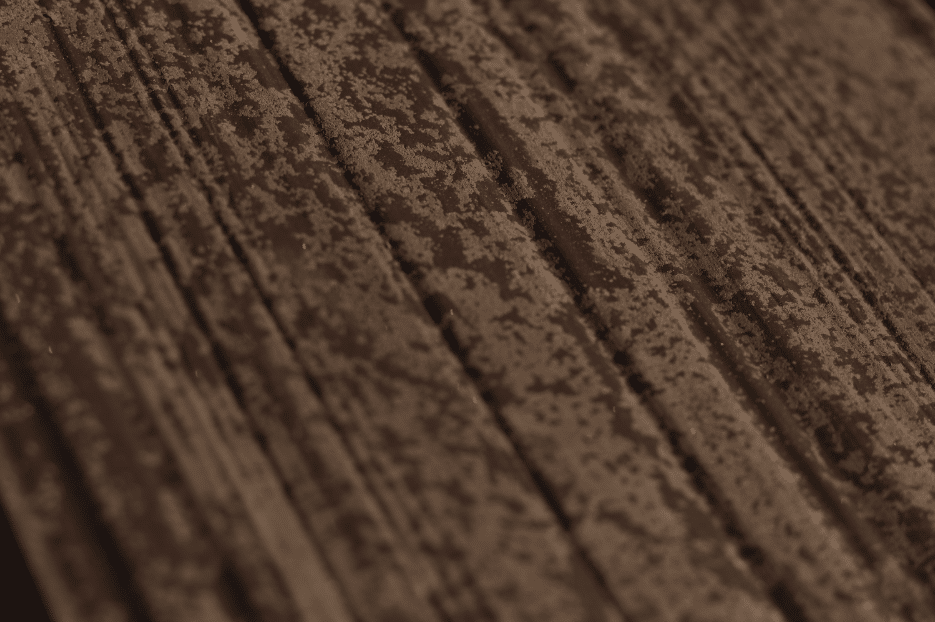
Faux cedar shakes, composite shakes, and synthetic cedar shake shingles all refer to the same thing: an alternative to traditional cedar shake shingles.
Synthetic shingles are a newer type of roofing that uses alternative materials to replicate traditional forms of roofing materials. Most of these shingles are made from a mixture of materials, including some with recycled plastic or rubber as the main component. A synthetic shake shares many of the same aesthetic characteristics of their traditional counterpart, but synthetic roof offers certain things that traditional roofing doesn’t. Faux cedar shakes are one synthetic roofing option that offers more benefits when compared to traditional cedar roofing.
Benefits of Synthetic Cedar Shingles
1. Better Impact Resistance
One issue with traditional cedar is that, while it is durable, it cannot go completely unscathed from storm damage in a high wind or significant weather event. Large hail stones can damage wood shingles, cracking the wood and causing pieces to break off, which can affect how well the shingle protects your home.
Because most synthetic wood shingles are made of durable material, they are much stronger than real wood. Some synthetic shake roofs offer a Class 4 Impact Rating which means that they can withstand the impact of 2-inch diameter steel balls that are intended to mimic hail impact. Some even carry a hail resistance warranty. For that reason, impact-resistant synthetic cedar shake roofing is an ideal option for hailstorm prone areas.
2. Realistic Appearance
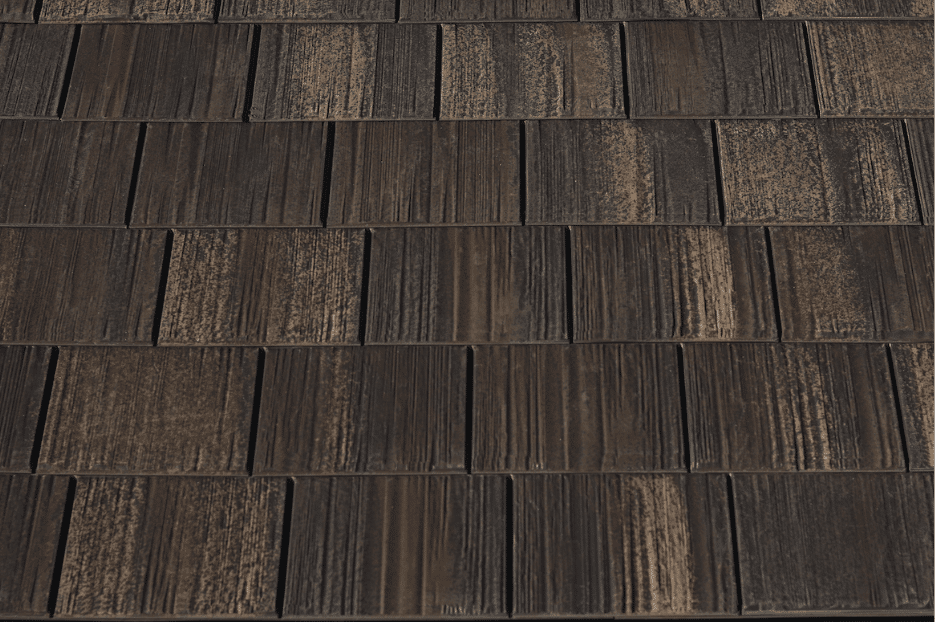
One concern about faux cedar shingles is how realistic looking they are. In the past, most synthetic cedar shake roofing wasn’t realistic in appearance. The cedar “look” was not always UV stable and would fade over time, leaving a dull looking shingle.
Most newer synthetic cedar shingles, however, are made using new processes that allow for a more permanent and realistic appearance. With more modern technology and materials available, the best of the new composite shakes will not fade or lose their appearance over time when exposed to the elements.
3. Fireproof
Unless you apply a fireproof coating, traditional cedar shake shingles cannot pass most local fire codes. If a fire breaks out, they will burn relatively quickly compared to other roofing materials. Most municipalities now require roofing materials to have a UL Class A fire rating.
Synthetic cedar shake shingles can be made in a unique way that makes them fireproof without the need for special coatings. They can have a UL Class A Fire Rating, which is the highest fire rating a construction product can earn. Class A Fire Rated Synthetic cedar shingles take longer than other materials to catch on fire, and also limit the ability for a fire to spread, so they are approved for use by the strictest building codes in places like California, Oregon and Colorado.
4. Can Withstand Strong Winds
Another issue that non-composite shakes suffer from is getting cracked or blown away by strong winds. In most cases, traditional shake shingles are only installed to withstand winds up to 90 mph, so if anything stronger comes along, there is a chance the roof can suffer serious damage.
However, most synthetic cedar shake shingles, because of their durable design, can withstand much stronger winds. Most have Class F Wind Rating and can withstand hurricane-force winds up to 110 mph. Some newer models of synthetic cedar shake roofing even offer a Class H Wind Rating, which can handle winds up to 190 mph.
5. UV and Weathering Resistant
Over time, traditional wood shake shingles take a beating from the sun’s UV rays and become weathered. This can damage the natural color and will cause them to fade more quickly, leaving the roof looking old and damaged.
Most Synthetic wood shingles, on the other hand, are resistant to weathering from the sun as well as being resistant to bugs and insects (which can be another costly problem). The colors will typically fade slowly, and the shingles don’t become weak and brittle over time.
F‑WAVE® REVIA® Synthetic Shake Shingles
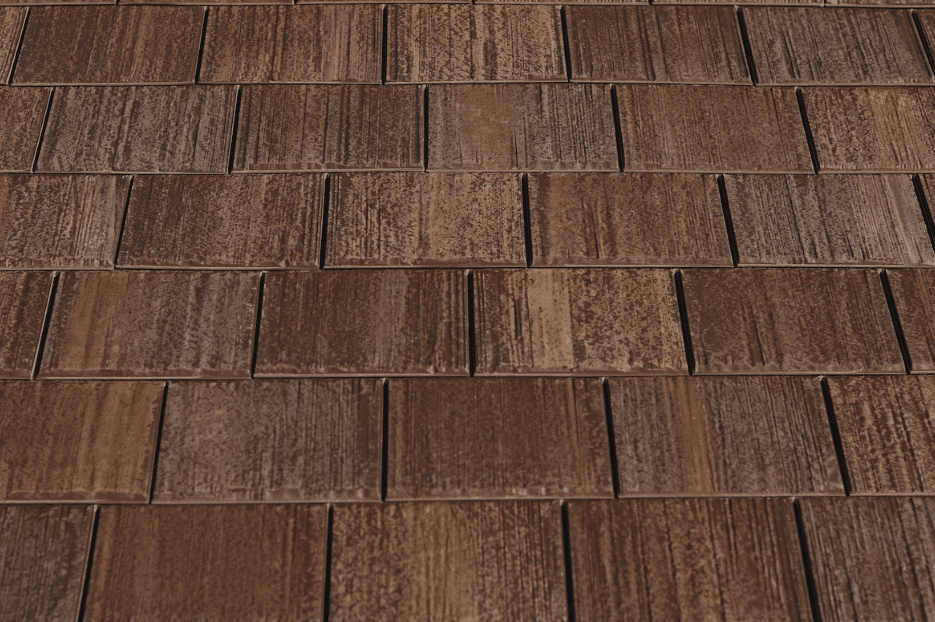
FWave is a company that has created a new line of synthetic shake shingles known as the REVIA® Hand-Split Shake Collection. They are made from a commercial-grade polymer material that produces an incredibly strong and highly durable synthetic shake. As a result, REVIA® faux shake shingles are much more durable, easy to maintain, and just as easy to install as standard asphalt shingles. They can resemble the look of designer asphalt shingles, slate tiles, and now even hand-split cedar shake, giving homeowners a wide range of design possibilities.
FWave’s line features all the benefits above, and more. They are a lightweight roofing option that is available in a range of colors and styles. A lightweight synthetic shake means there is less concern about adding too much weight on the roof of the home, which can cause structural issues. One of the best features of F‑WAVE® synthetic cedar shake roofing is that it is affordable for most homeowners.
Select the Best Roofing Material
These days, there are countless roofing options. Synthetic cedar shingles are even better than their traditional counterparts. Not only do they replicate the appearance of the real thing, but they are stronger, lighter, more durable, maintenance-free and much more affordable. If you are looking for cedar shakes as an option to add a premium upgrade to your roof, consider F‑WAVE® synthetic cedar shake roofing to give your project a one-of-a-kind style.
Posted in Synthetic ShinglesThe Truth About How Long Asphalt Shingles Last
When it comes to roofing options, there is nothing more common than asphalt shingles. In fact, you can find them covering most homes in the country. However, when you install or replace a roof, you are investing in your home and the protection of our largest investment, and you want to ensure the new roof will last a long time.
Before you blindly choose asphalt shingles because this is what you’ve always had, it’s important to do some research. On average, asphalt shingles can be expected to last less than 20 years depending on where you live and the type of weather that your roof is regularly exposed to.
Here is what you should know about the lifespan and performance of asphalt shingles:
What Affects Their Lifespan and Causes Damage?
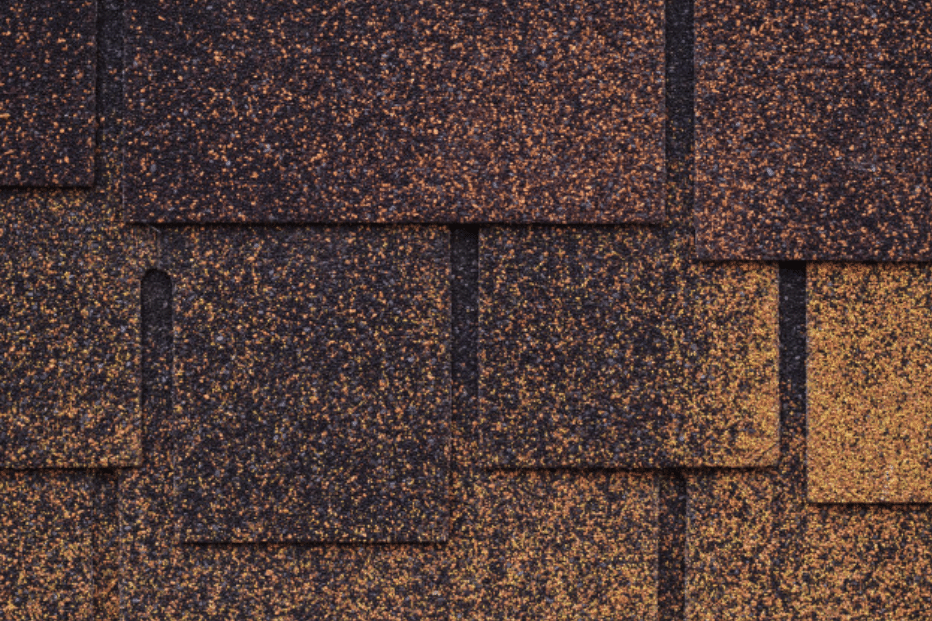
How quickly and frequently asphalt shingles have to be replaced depends on the style of shingle chosen, location, and the severity of storm damage they sustain. Typically, you may have to replace asphalt shingles anywhere from every 5 to 25 years, depending on these factors:
Climate and Weather
Asphalt shingle life is strongly affected by climate and weather conditions. If you live in an area where the climate constantly fluctuates (hot to cold, wet to dry), it can have a significant effect on the lifespan of your roof. Sun, rain, hail, wind, and big temperature swings all play a part in how quickly you lose the protective layer of granules, and in causing the waterproofing asphalt to age and become brittle. As these granules fall off the asphalt shingle is subjected to damaging UV exposure, which can dramatically shorten their life.
Improper Insulation and Ventilation
Your attic needs proper insulation and ventilation to help minimize the temperature of your roof. When heat builds up in your attic, under the roof deck, it can lead to premature failure of the asphalt shingles.
The Roof Pitch
The pitch or slope of the roof also affects how long asphalt shingles last. When roofs have a low slope, water, snow, leaves, and other debris are left sitting on the shingles longer. This means excessive moisture can remain on the roof, which can lead to mold, mildew, and rot. A high-pitched roof can more easily allow water and debris to run off, which typically means the roof will dry-out much more quickly.
A Lack of Maintenance
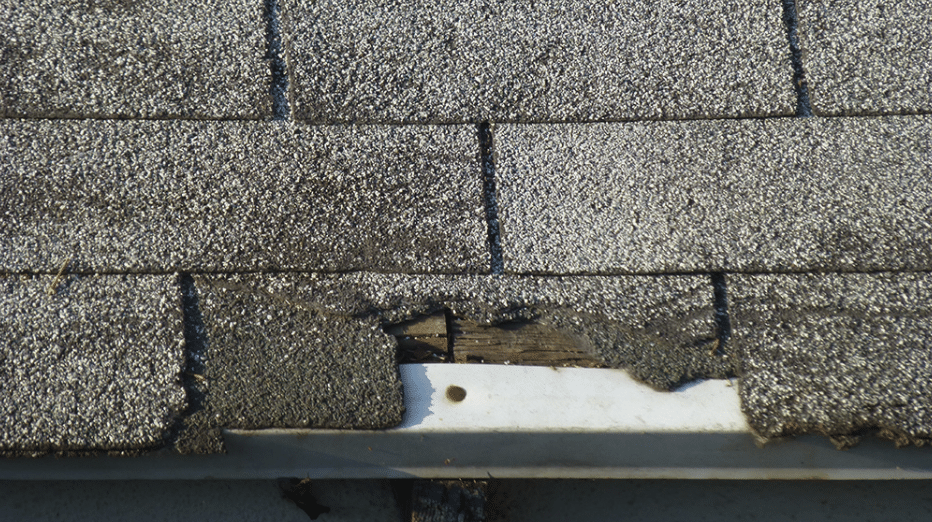
The most obvious factor that affects the lifespan of an asphalt roof is a lack of regular maintenance and upkeep. According to, Steve Lyons, from Houston Home Remodeling Pros, “while asphalt shingles do not require the same level of maintenance as other options like real cedar tiles, you still want to protect against the seasonal damage caused by ice dams, leaf and debris build-up, hail and wind-storm damage.” All of these events can lead to granule loss, excess moisture, mold, algae, and the overall shortening of your roof life and it’s ability to adequately shed water.
Maintaining Asphalt Shingles
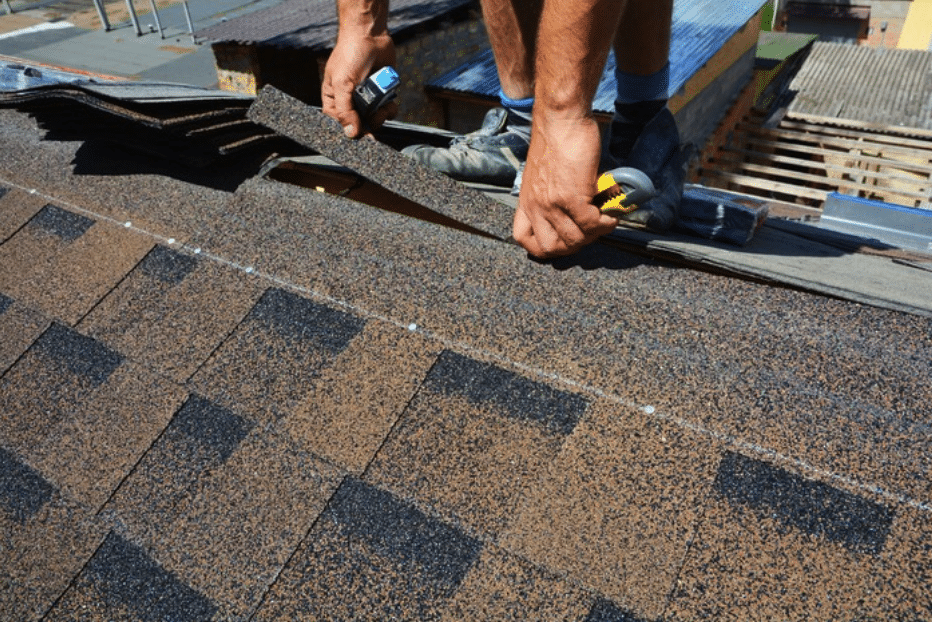
A big part of how long asphalt shingles will last depends on the level of maintenance you perform. Doing some basic maintenance at least three times a year can help expand the life of your roof, which can save you thousands in roof repairs and replacements.
One part of maintaining an asphalt roof is removing any debris that has collected. Debris can be leaves, small branches, or small garbage blown by the wind that collects on the surface. Removing this debris helps ensure that moisture doesn’t remain on the roof, where it can deteriorate the asphalt shingles. You also want to check your roof for algae or moss, which can also degrade your shingles.
You should also check your roof’s flashings, which are designed to prevent water from entering your home. With flashings, you’ll want to check for cracks, openings and unsealed gaps, algae, and moss. Then, you need to check the shingles themselves to identify any loose, damaged, or missing shingles so any necessary repairs or replacements can be done before real damage occurs.
Another important part of maintaining your asphalt shingles is keeping your gutters free from debris and granule build-up so that they function properly. Lastly, you want to trim any overhanging tree branches, so the leaves don’t fall onto the roof or clog the gutters. You also need to trim any branches that are too low, so they don’t scratch the surface of the roof and loosen the granules.
Synthetic Alternative To Asphalt Shingles
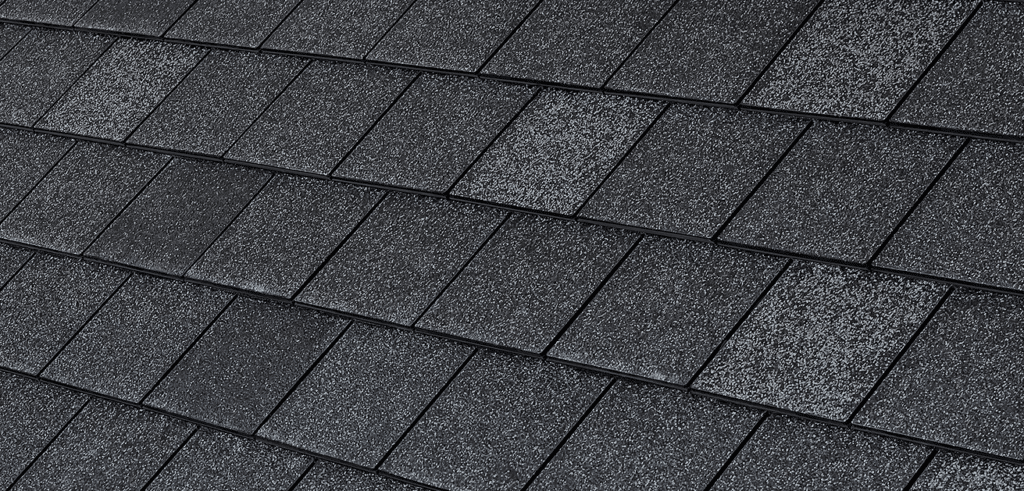
Asphalt shingles are the most commonly installed roofing material currently available today, but they aren’t without flaws. There are new brands of durable roofing shingles that still resemble the look of traditional asphalt, without the negative issues like granule loss, rot, and premature aging. F Wave has designed their REVIA® Synthetic Shingles as a premium upgrade and great alternative to traditional asphalt shingles. Containing no asphalt and no granules, REVIA® Synthetic Shingles solve several of the primary issues that cause asphalt shingles to prematurely age and fail.
The REVIA® shingles are made using a lightweight, commercial-grade polymer material with a single-piece construction. The biggest difference between REVIA® shingles and traditional asphalt shingles is that, due to their design, there is no asphalt or granules. As a result, REVIA® shingles are much more durable and impact resistant than the average asphalt shingle.

REVIA® shingles come with a Class 4 Impact Rating and a Class A Fire Rating, the two highest safety ratings possible for roofing materials. They also have a 130 mph wind rating, making them safe for coastal, mountain, and other high-wind areas. REVIA® shingles are also moisture and UV-resistant. Best of all, unlike other traditional roofing options, F Wave’s line is a great option for a low-maintenance roof.
There is no denying the current popularity of asphalt shingles. But this is no reason to blindly select an asphalt shingle for your next roof. The projected lifespan of asphalt shingles is a question you don’t want to ignore. Many factors can affect the lifespan of an asphalt roof, especially storm damage, extreme climate and weather, and poor upkeep and maintenance. If you want a roof that will look beautiful and designed to last for many years with low maintenance requirements, look no further than F Wave’s line. They have the familiar look of asphalt roofing but are a much better investment for your home.
Posted in Asphalt AlternativesWhy You Should Skip Traditional Slate Roofing Tiles
Just like with other exterior building products like siding, windows, and doors, there are countless roofing options available. Each one is different, offering advantages and disadvantages to be carefully considered. One roofing option for some is real slate roofing tiles. While this form of roofing can be nice looking and long-lasting, there are some disadvantages to consider. There is also the option to consider synthetic slate roofing, which can offer the look and durability of traditional slate roofing material without the structural weight and cost.
What are Slate Roofing Tiles?
Slate roofing tiles are made from metamorphic rock. It is a beautiful, natural material that has been used as a building material for centuries.
Slate roofing tiles come in two options: hard slate and soft slate. Hard slate is the strongest type of slate, and more durable than soft slate.
Slate is only an option when you have large roof areas and a structure that can hold the extra weight. If you have a more modest roof size and a structure not designed for the added weight, synthetic slate roofing can be a great option.
Advantages of Slate Roofing Tiles
1. A Natural, Beautiful Material
By far, the biggest advantage of slate is its beauty. As a natural material, you do not have to do anything to slate to enhance the looks. It comes in a wide range of colors, including green, gray, black, purple, and red. These tiles are also hand-shaped, which adds to the unique and beautiful appearance.
2. Low Maintenance
Because slate is a natural material and highly durable, it requires little maintenance. You will only need to clean it every so often. And the look can actually be enhanced by fungus and mold growth.
3. Durable–to an Extent
There is no denying that slate offers a certain level of durability. It is fireproof, waterproof, and can withstand the elements well. However, it is not invincible and can be damaged by large hail and even foot traffic.
Disadvantages of Traditional Slate Tiles
1. Fragile and Difficult to Replace
Walking on slate tiles can result in damaged and broken tiles if you do not know what you are doing, and replacing damaged tiles is complicated. Not only will replacing the tile itself be hard, but finding tiles that match the rest of your roof will be difficult. As a result, your roof may end up looking inconsistent.
2. Cost
One of the biggest issues with slate tiles is the cost. Other than high-end metal roofing, Slate is one of the most expensive roof options available, with the installed cost ranging anywhere between $5 and $12 per square foot. However, that doesn’t include the cost of installation, which raises the overall cost to the range of $12 to $25 per square foot. The cost will depend on your location, the size and slope of your roof, and your roofing contractor.
3. Weight
The weight of slate tiles is another big issue. Slate roofing tiles are incredibly heavy, weighing anywhere from 800 to 1,500 pounds per square (100 ft2). Very few homes are built to withstand such weight.
4. Difficult to Install
Considering the weight and fragility of slate tiles, it makes installation a complex process. You will need to find an experienced slate roofing professional to ensure that your traditional slate roof is installed the right way, otherwise, you can have major issues.
Why Synthetic Slate Tiles May Be Better

As nice as real slate roofing is, with the various disadvantages it may be better to consider your alternatives. Instead of traditional slate, consider synthetic slate roofing or engineered slate roofing.
For the best synthetic slate roofing options look to F Wave. Their REVIA® Synthetic Shingle line includes two great options that replicate the look of traditional slate, with added advantages. The F-WAVE® Designer Slate Collection includes two profile options, a traditional square tile or corner-cut tile appearance, both designed with a faux granule surface for the look of premium, heavy-weight asphalt shingles. The F-WAVE® Classic Slate Collection is a square tile with the look of hand-cut traditional slate. All are available in a variety of popular color choices.
More Durable
F-WAVE® synthetic slate roofing shingles are an incredibly durable roofing option. They offer the highest ratings available to roofing materials, with a Class A Fire Rating, a Class 4 Impact Rating, and anywhere from a Class F to Class H Wind Resistance Rating. This means they are guaranteed to handle up to 2” hail and 130 mph winds. REVIA® shingles are also UV resistant, and designed to weather beautifully for years. Jeff Guthrie, of Phoenix Roofing Contractors, says “You can also walk on REVIA® synthetic slate roofing without worry of breaking or cracking the tiles, and when scuffed or scratched they will self-heal in natural sunlight.”
Lightweight
While real slate is heavy, synthetic slate roof tiles are incredibly lightweight. Slate can weigh anywhere from 800 to 1,500 pounds per square. F-WAVE® REVIA® shingles weigh a fraction of that, making them suitable for almost every structure and much easier to install.
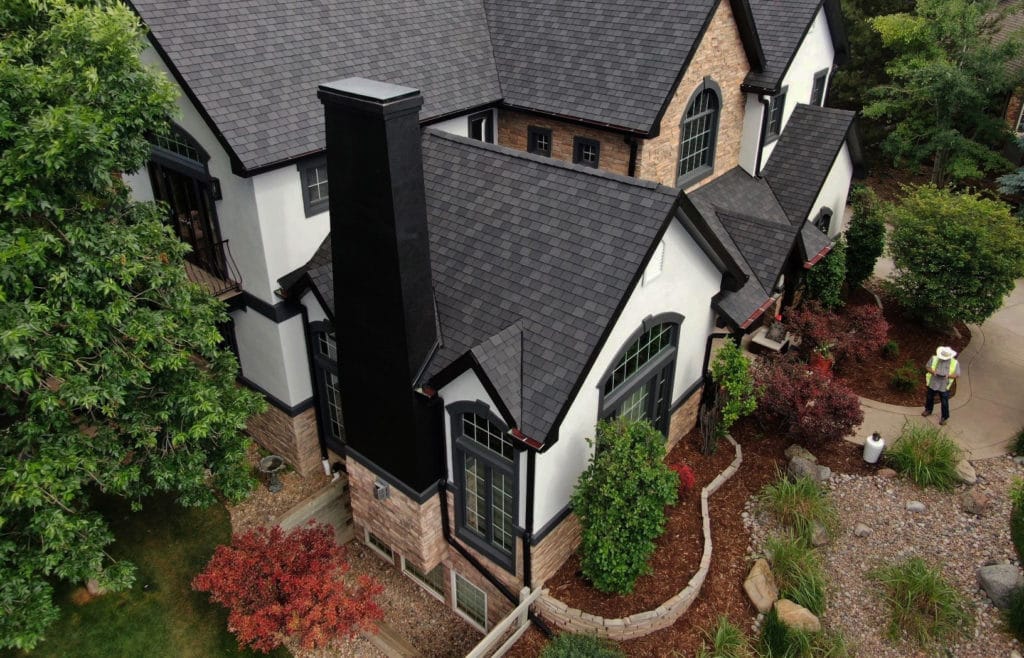
Easy to Install
The lightweight, single-piece construction of REVIA® slate roof tiles makes them much easier to install than real slate. The fact that roofing contractors can walk on the synthetic tiles without fear of damaging them makes a huge difference. For the most part, they install just like traditional asphalt shingles, which greatly reduces the installation cost.
Low Maintenance and Affordable
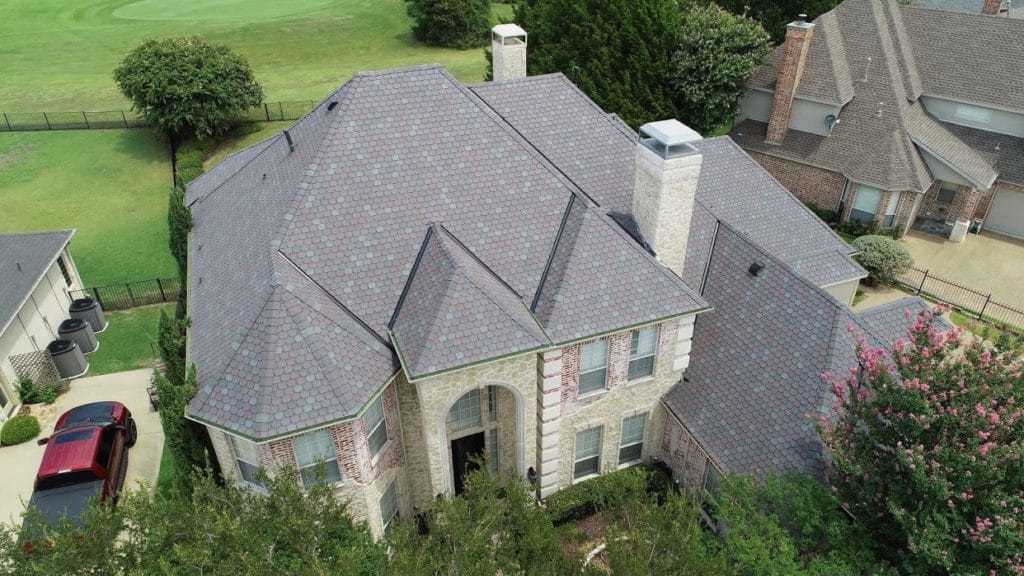
Synthetic slate roofing is also low maintenance. You may have to clean off debris now and then, but you will not have to worry as much about things like moss and algae. Synthetic slate shingles are also a great roofing option due to their affordability, and because they do not require a special roof loading or installation method, you will save even more money.
As beautiful as traditional slate tiles can be, they are not an ideal roofing material for most homeowners. Instead, consider synthetic slate roofing. F-WAVE® REVIA® Synthetic Shingles are one of the best synthetic slate roofing options on the market today. They offer the beautiful look and curb appeal of real slate roofing tiles, without all the drawbacks of real slate material. As a result, synthetic slate roofing can give you that beautiful, upscale look that you would get with slate, without all the weight and at a fraction of the cost.
For more information on synthetic slate roofing contact F Wave to speak with one of their roofing experts.
Posted in Synthetic ShinglesSettling the Polymer Composite Shingles vs. Asphalt Composite Shingles Debate
In the early 1900s, organic asphalt shingles became the primary roofing option and dominated for the next 70 years with little innovation. By the 1980’s fiberglass asphalt shingles – including multi-layer “composite shingles” took hold, followed by other alternative materials like wood fiber shingles. Some of these performed well, some did not. Over the past 20 years the Polymer Composite or Synthetic Shingle has been refined and has gained popularity in many markets.
Not to be confused with a composite asphalt shingle which generally means multi-layer, the Polymer Composite Shingle is made from advanced materials and have so much more to offer when compared to traditional asphalt shingles, which makes them a great option for most homes across the country. Here is what you should know when it comes to the polymer or synthetic composite shingles vs the asphalt composite shingles debate.
What are Polymer Composite Shingles?
Polymer Composite or Synthetic shingles, as they are known, are made from engineered materials and sometimes contain a mixture of recycled plastics and rubber. They come in many different styles and profiles, and are made to replicate the look of traditional asphalt shingles, wood shakes, and stone tiles. However, unlike their traditional counterparts, composite shingles are a much more durable and maintenance-free option.
6 Problems With Asphalt Shingles
1. Asphalt Loses Granules
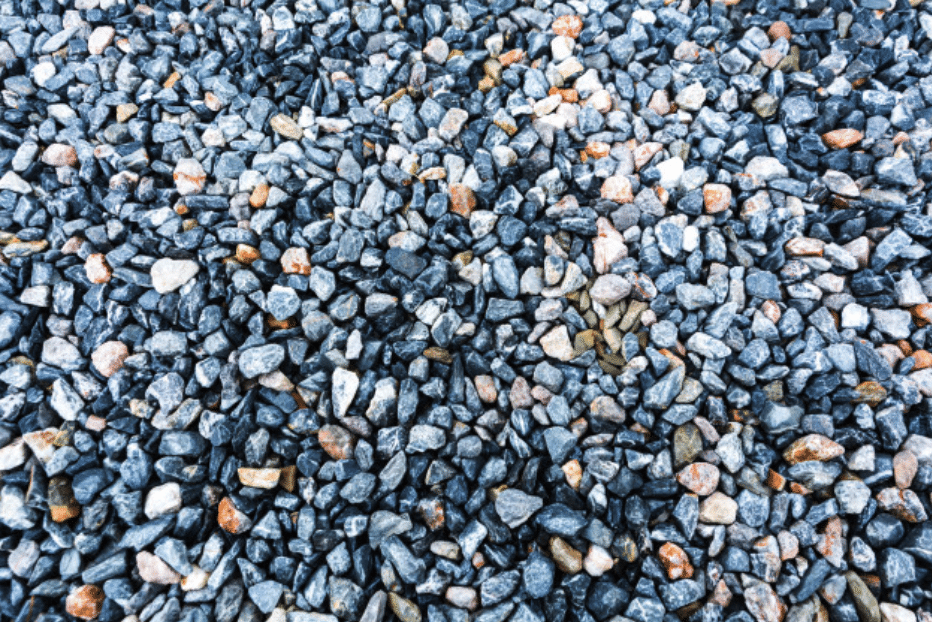
Asphalt shingles are made up of multiple layers of materials, with the uppermost layer consisting of small granules. These granules provide the shingle color, but have the primary function of protecting the asphalt waterproofing layer below from UV damage. Without the protective layer of granules an asphalt shingle will quickly become brittle and crack. The granules also add fire resistance, and make installation possible – as the installers could not walk on bare asphalt. However, being exposed to the elements means that these granules are gradually lost over time. Wind and hail cause granule loss, even with Class 4 impact rated shingles. And granule loss is generally not covered in your product warranty. Granule loss is serious as it is the #1 signal that the shingles are reaching the end of their life and need to be replaced.
Polymer Composite shingles do not have granules so there is no need to worry about a loss of protection from the shingles. Instead, they are made of a single layer of durable, UV resistant material that is engineered to handle the various elements that granules were meant to protect asphalt shingles from, including foot traffic from the installers.
2. They Easily Tear on Impact

While some asphalt shingles offer a decent amount of durability, they are not indestructible or highly impact resistant. With exposure to the elements, things like hail and wind can have a massive impact on the shingles life expectancy. They can also tear and crack during normal installation, depending on how they are handled and nailed down. This type of damage will mean repairs have to be done or shingles replaced, otherwise, the roof will begin to fail almost immediately.
Polymer Composite shingles are specifically engineered to handle the elements, and the rigors of installation. Unlike asphalt shingles, they offer superior strength and resistance to tearing and cracking. They are also easier to install, so you don’t have to worry about granule loss or torn and cracked shingles during the installation process.
3. Strong Winds Can Damage a Roof
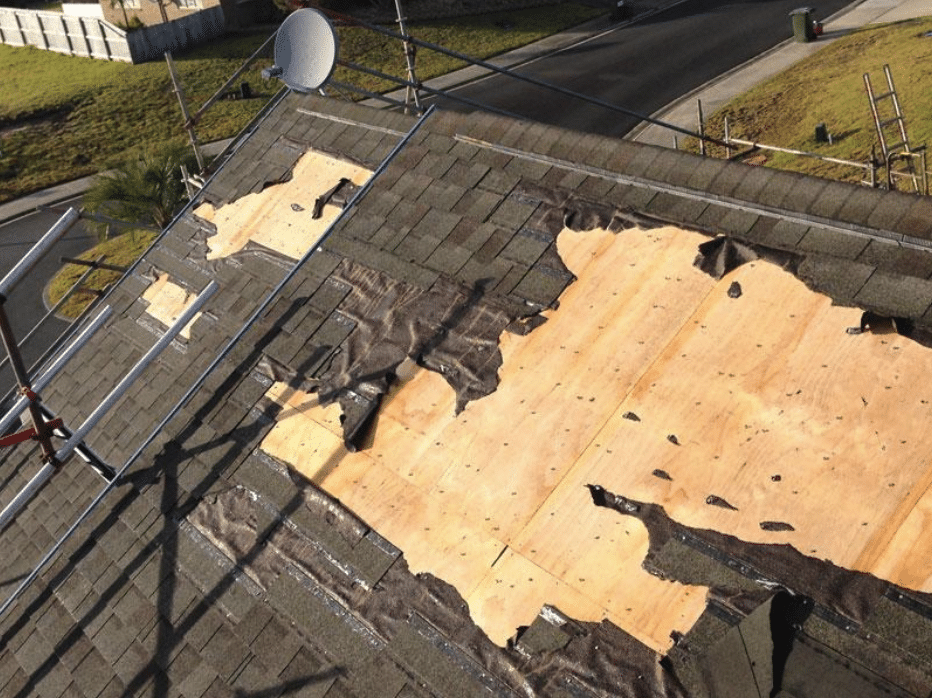
Asphalt shingles generally can only withstand winds up to 90 mph, meaning they have a Class D Wind Rating. If stronger winds occur, and they surely will in most areas, shingles can be ripped off the surface of the roof, leaving the home unprotected and prone to storm damage. It means homeowners will have to spend even more to handle repairs or replace the entire roof which can be a horrendous expense in the midst of a severe weather event
Polymer Composite shingles have Wind Ratings that range from Class F to Class H–ratings which means the shingles can withstand anywhere from 110 to 190 mph winds. They are made to withstand even the strongest hurricane-force winds, making them safe and an ideal choice for homes anywhere.
4. They Generate More Heat
While the granules on asphalt shingles are meant to protect from the sun’s rays, the protection isn’t perfect. They are notorious for generating more heat than other roofing options, which means a home’s interior temperature would rise, and the homeowners would spend more on both heating and cooling, respectively. Generating more heat also means asphalt shingles are more prone to the effects of weathering and will, therefore, become worn much sooner.
Polymer Composite shingles generally offer a much higher level of UV resistance. Some are designed to reflect the Sun’s rays, they are more resistant to weathering and will not wear down as fast. They can also allow a home’s interior to keep a better-regulated temperature so that homes will be comfortable year-round.
5. Prone to Algae Growth and Ice Dams
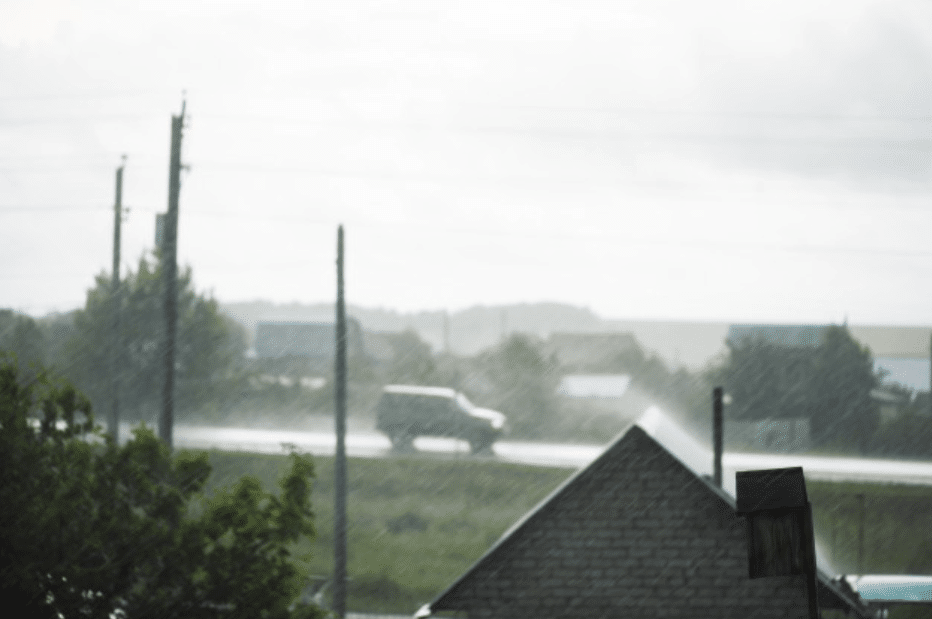
In high humidity climates and on north-facing roofs asphalt shingles on north-facing roofs asphalt shingles can be prone to algae growth. When excessive moisture collects, it can also lead to issues like mildew growth in the summer and ice dams in the winter. Excessive moisture can even permeate past the roof and into the attic or interior of the home, where it can cause even more damage.
Polymer composite shingles are naturally better designed for water-shedding and more resistant to moisture, so algae growth, ice dams, and other damaging effects of excessive moisture are off less concern.
6. They Might Not Last As Long as Expected
With all of the performance and installation issues that come with asphalt shingles, it means they can generally have a shorter lifespan compared to an option like polymer composite shingles. At some point, usually within 10-20 years, asphalt shingles will require replacing due to granule loss, cracking, accelerated weathering, or other issues like wind blow-off and hail damage.
Polymer Composite shingles can last 50 years or more without routine maintenance or needing to be replaced due to storm damage.
F-WAVE® REVIA® Synthetic Shingles

One brand of polymer composite synthetic shingles is the line from F Wave. They are made from a single layer of commercial-grade polymer that is engineered to be incredibly durable and maintenance-free. They offer all the benefits of a polymer composite shingle listed above, making them a much more reliable roofing option. In addition to their basic benefits, these synthetic shingles mimic a wide range of styles and profiles, from wood shake shingles, slate shingles, and even the popular designer asphalt shingles.
Polymer Composite Shingles vs. Asphalt Composite Shingles
When considering polymer composite shingles vs asphalt composite shingles, there are several factors to keep in mind. Asphalt shingles are the traditional choice as a product that has been around for 100 years, but they come with many known problems.
Choosing asphalt shingles for your roof may have you doing more repairs or having to replace your roof due to UV and storm damage sooner than expected. With polymer composite shingle roofing, you will have an easy-to-install, designed-to-be durable and maintenance-free roof that will help you avoid the issues that you would have asphalt.
For more info on how you can make the best roofing choice, contact a roofing expert at F Wave today.
Posted in Synthetic ShinglesSynthetic Shingles Take Over as The Best Asphalt Roofing Option for 2020
With the end of the decade right around the corner, people are looking to update their home’s exterior for one reason or another. Sometimes they just want a new look, but in many cases, homeowners will find themselves needing to replace their siding or even their roof due to age or damage. Of all the parts of your home’s exterior, keeping your roof in good condition is most important.
Most would just choose the best asphalt shingles, but 2020 is the year to choose something better and more durable. Instead of regular asphalt shingles, consider durable synthetic shingles that look like asphalt.
Skip Traditional Asphalt–Go Synthetic
Asphalt shingles have long been the primary roofing option across the country, but these days, there are more (and better) options. F Wave is a company that has created the REVIA® line of synthetic roofing shingles. Their unique commercial-grade polymer construction makes for a beautiful, lightweight, and highly durable shingle. The REVIA® shingles are made to resemble the look of traditional asphalt shingles and even slate tiles, which makes them the perfect alternative to traditional roofing options.
What Makes Synthetic Shingles So Popular?
One of the biggest benefits of synthetic shingles is their durability. The line of synthetic shingles is 2.5 times stronger than traditional asphalt shingles. They offer an authentic, ultra-dimensional look, with a tough, single-piece construction, which means that you will not have to worry about the delimitation of shingle layers, the potential of adhesive failure, or even granule loss. The construction quality also means that they are also resistant to problems like cracking and fading.
There are many other features help make synthetic shingles a popular roofing option. They have a Class A Fire Rating and a Class 4 Impact Rating, the highest ratings possible for construction materials. They also are capable of withstanding up to 130 mph winds. With so much durability built-in, they are the perfect option for houses anywhere–from wildfire-prone California to hurricane-prone states like Florida.
What’s Wrong with Asphalt Shingles?
While asphalt shingles look nice, even the highest quality brands are not perfect. They are not nearly as wind-resistant as their synthetic counterparts. Real asphalt shingles are made up of layers that can peel and crack, or tear easily, and do not offer much fire or impact resistance without extra coatings or protection.
Asphalt shingles, for one, have to be installed correctly. Otherwise, you can encounter all sorts of expensive and potentially disastrous issues, like raised shingles that can be torn or blown away by strong winds. Over time, shingles may experience issues like blistering, splitting, tearing, and even granule loss. These issues can arise for several reasons, but age and moisture are the top two culprits.
In some cases, simple repairs can be made, but in other cases, the whole roof has to be replaced, which can be very expensive.
The Synthetic Roofing Trend in 2020
Asphalt shingles were once the top choice for roofing material across the country. However, 2020 is the year to try something new and better. Instead of choosing asphalt, use synthetic shingles, like the REVIA® line, which offers the same beautiful, realistic asphalt look but gives you much more durability. You will not be disappointed by choosing these shingles for your home roofing design.
Synthetic Roofing Design Ideas
1. Skip the Basic Shapes

F‑WAVE® REVIA® shingles are special for their features, as well as their appearance. They look just like real asphalt shingles, since their ultra-dimensional design gives them much more depth. There are two different style options: the classic, rectangular American Blends series, and the stand out Estate Series, which offers a more sophisticated look.
2. Match the Roof Color to Your Exterior

What makes synthetic shingles, like the REVIA® line, so nice is that they aren’t only one single color. Within one color option, there is enough variance that you can easily match your roof to stone or tile accents on your home to help tie things together.
3. A Dark Roof With Light Siding
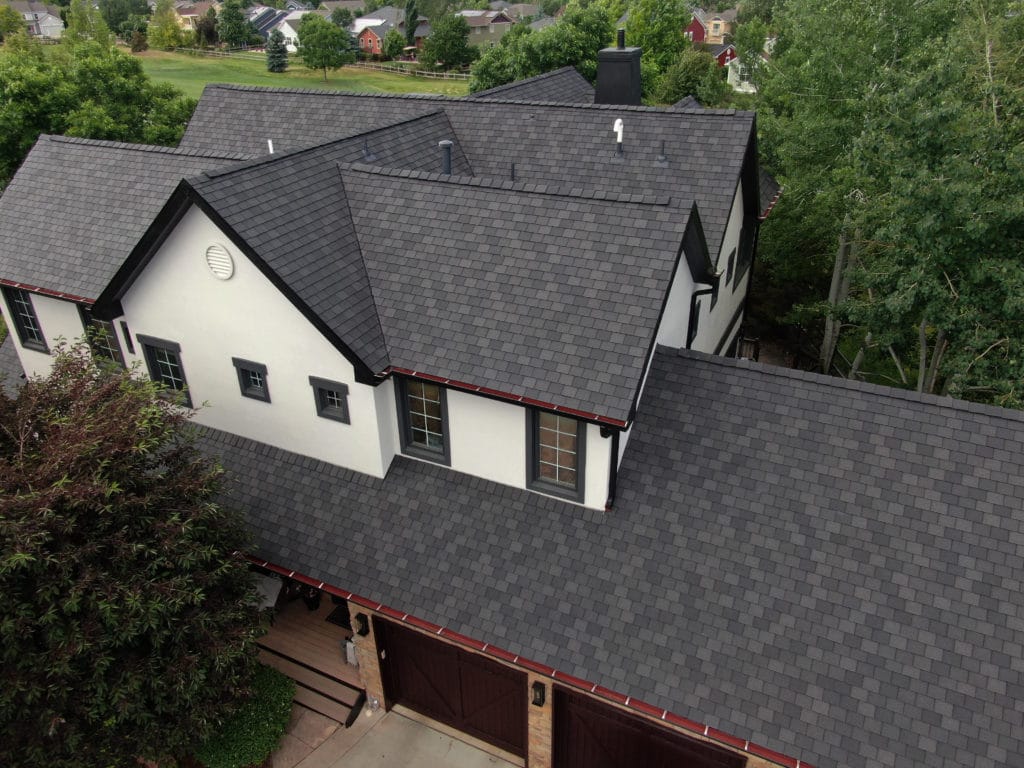
Nothing is more classic for home styles than matching a dark roof with a simple, clean white or light-colored exterior. It is a combination that really allows your home’s roof to stand out while remaining very traditional.
4. Choose Something Light
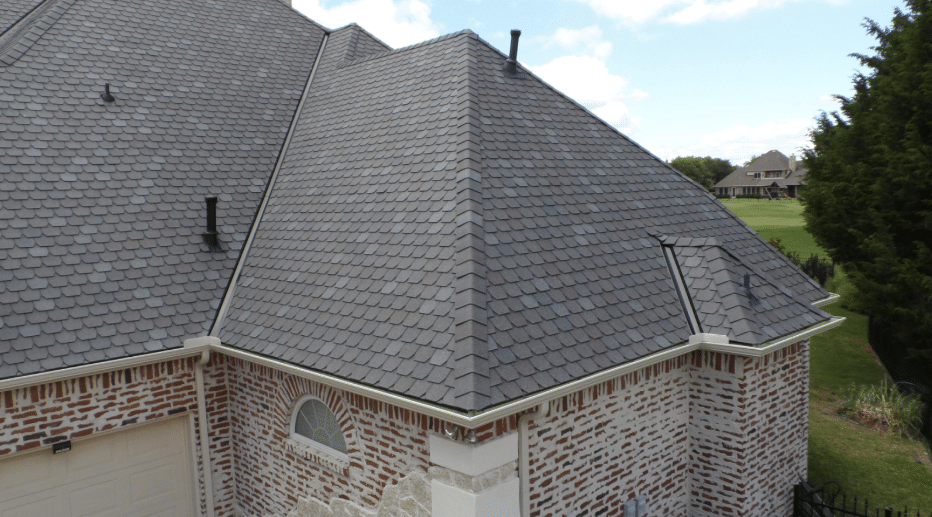
Synthetic shingles offer more variety in their colors, while asphalt shingles are usually dark. For something different, you can consider a lighter gray synthetic shingle, that will help to brighten your home’s exterior and allow it to stand out from the other, dark-roofed homes in your neighborhood
5. Go With Brown Shingles
It’s not often that you see brown shingles outside of wood shakes, but the REVIA® synthetic shingles have a beautiful dark brown option that looks good on any home. With bits of lighter brown to help break up the dark areas, it’s a lovely option that can give homes a slightly different, but traditional look.
Synthetic, the New Normal
Asphalt shingles have been a tradition for a long time, but they are by no means the most durable option on the market. If you were to choose the best asphalt shingles you can get, there are also many potential problems you can encounter. For this new year 2020, it’s the year to choose a roof that you can rely on for years to come to be strong and durable.
Synthetic shingles are the best option for homeowners for reliability–while it looks like real asphalt, it is far more durable, keeping you and your home better protected.
Posted in Synthetic Shingles6 Common Problems You’ll Want to Avoid with Asphalt Roofing Shingles
Asphalt shingles have long been a popular roofing option, for many good reasons. They are easily accessible, affordable, and incredibly versatile in their style applications. However, that doesn’t mean they are without issues. There are some problems with asphalt roof shingles that all homeowners should be aware of when choosing their roofing material.
Common Asphalt Roofing Shingles Problems
Being aware of these problems beforehand–and the different possible alternatives–will help you to make a more educated decision about your roofing choices.
1. Shingle Blistering
When it comes to roofing, blisters are elevated sections of the shingles. Several different factors cause these elevated areas. Small blisters are usually due to aging, but they can also be a sign of a defective product. Asphalt shingles can also blister from poor roof ventilation.
Regardless of the cause, shingle blistering is an unattractive issue that can lead to more significant problems if left unchecked.
2. Shingle Curling
Another issue with asphalt shingles that you may encounter is curling. Curling is when the asphalt shingles begin to curl away from the surface of the roof. Typically, curling is a moisture-related issue. In some cases, moisture may get into the shingles during the actual manufacturing process, while in other cases, it may accumulate in the shingles over time due to poor roof ventilation.
Once the moisture begins to escape, the dimensions of the shingles can start changing. The more severe the issue, the more likely the shingles will need to be tabbed down or replaced entirely.
3. Raised Shingles
If not installed correctly, asphalt shingles can be more susceptible to strong winds. As strong winds hit the roof, the shingles can get lifted and even possibly torn off the roof. Unfortunately, once a roof has raised shingles, there is no way to fix it, and the only solution is to replace the entire roof.
4. Premature Cracking
Another problem with asphalt shingles is surface cracking, especially when it is premature. While surface cracking does not tear a shingle, it can be a sign of aging and lead to more considerable damage if not dealt with quickly. However, cracking can also occur as shingles move due to things like high winds, which can have a number of effects on asphalt shingles.
5. Thermal Splitting or Tearing
If asphalt shingles are subject to extreme temperature changes, the shingles can begin to crack and may even split completely. It can prove to be a severe issue that can impact the integrity of your entire roof, especially if any cracks go unnoticed. Over time, these cracks can allow moisture to seep through the shingles and into other layers of roofing, which can lead to all types of serious and costly damage.
6. Granule Loss
A big problem you can encounter with asphalt shingles is granule loss. The granules on asphalt shingles make up the uppermost layer of the shingle and they are there for more than just appearance. The granules help to protect the shingles from water damage, provide UV protection, and can even offer some fire resistance. Granule loss is something serious you never want to ignore, as it is a sign your roof is reaching the end of its life.
Granule loss can happen in different ways. The most common is granule loss over time due to age. However, weather such as strong winds and heavy rain, and even harsh cleaning, can also lead to granule loss.
Avoiding Problems with Asphalt Roof Shingles

Any of these problems with asphalt shingles can be stressful and exhausting. In most cases, the easiest way to remedy any of these issues is to replace the entire roof, which is incredibly expensive. Instead, you could consider an alternative to asphalt roofing.
F‑Wave is a company that offers the perfect alternative: synthetic roofing shingles. Both types of their REVIA® synthetic roofing shingles are made using a commercial-grade polymer material. While they may look similar to traditional asphalt shingles, they are more durable, lightweight, easier to install, and require much less maintenance.

The REVIA® shingles feature a Class 4 Hail warranty, a Class A Fire Rating, and can withstand winds up to 130 mph. Furthermore, they are resistant to UV damage and weathering, and feature a tough, single-piece construction. The single-piece construction means that there is no need to worry about layers of materials coming undone and curling. A single, durable layer of material also means it will not tear as easily as ordinary asphalt shingles. There is also no asphalt and no granules, so there are two fewer things to worry about.
Choosing the Better Shingle

Asphalt shingles are the common choice for roofing, but that doesn’t mean they are perfect. There are plenty of problems associated with asphalt roof shingles that can be exhausting and costly for homeowners.
If you want to save money on your roofing and not have to worry about replacing it sooner, consider choosing the F-WAVE® REVIA® synthetic shingles. They are just as beautiful and affordable as asphalt shingles and they offer far more durability, so your maintenance costs will be reduced dramatically.
Posted in Asphalt AlternativesDesigner Roofing Shingles: Give Your Home an Upscale, High End Look
While the most important feature of your roof is no doubt the protection it provides, it is not the only thing to consider. Aside from protection, you also want a roof that looks good. The right shingles can help tie the look of your home together and make it something beautiful.
Fortunately, you aren’t limited in the number of styles and colors of roofing shingles available on the market, so you’ve got endless options. For a more upscale look, you can go with designer roof shingles.
What are Designer Shingles?

Designer roof shingles, are also sometimes called architectural shingles, high-definition shingles, premium shingles, and even ultra-premium shingles. These shingles go beyond the average roofing shingle in the way they are made. Designer shingles are very similar to dimensional shingles in that they have a three-dimensional appearance that gives the shingles more depth.
What makes design shingles different, however, is that there are countless styles and colors to choose from. As a result, it isn’t difficult to find a roofing shingle that will help give your home a unique, more personal touch. From Victorian to modern, shaker-style to tile-style, the options for designer shingles are endless.
What Makes Them Different?

There are some great characteristics that make these shingles different from ordinary shingles. For one, they use only the highest quality materials: fiberglass, asphalt, and now, even synthetic polymers, which offer more durability.
Designer shingles are available in more ornate shapes and can mimic the look of more expensive shingle options like slate or terracotta tiles. Their durable construction also means they can withstand harsh conditions, like winds up to 130 mph, the impact from hail, and other weather conditions that could ruin an ordinary roof.
How to Choose Designer Roof Shingles
Choosing the right design for your home exterior is not easy. Choosing your designer roofing shingles requires careful thought since it can be a big investment.
1. Consider Your Budget
The first thing you’ll want to think about when choosing your designer shingles is your budget. The fact that designer roofs use more high-quality materials means that, at times, they can cost more than the average roof. What you’ll pay for with a designer roof depends on several factors: the size of your roof, the material you want, the style, and even the color can affect what you’ll pay. Knowing your budget from the beginning will allow you to focus on what is actually within your budget.
2. Choose Your Material
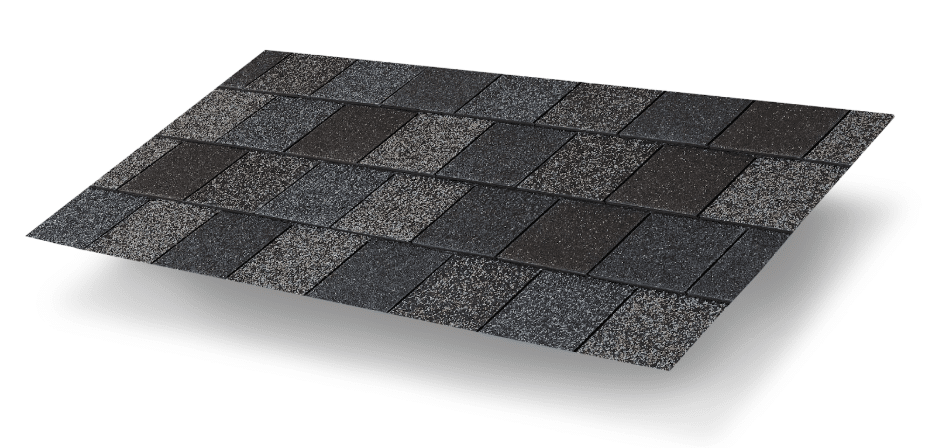
There are a few different materials used to produce designer shingles, and each one comes with advantages and disadvantages. One of the newer materials is synthetic shingles, like F‑WAVE® REVIA® Designer Slate Synthetic Shingles, which are made from a unique and highly durable polymer material. These shingles mimic the look of real designer slate tiles but are much more lightweight and affordable.
3. Keep the Pitch of Your Roof in Mind
Designer shingles come with many unique design options. Depending on the design you choose, the size, cut, and thickness can all play a role in how much it stands out. The pitch of your roof can also affect the look. A steeper roof will let more of the roof shingles show, while a roof that is less pitched will be more subtle.
The more unique shingle designs are highlights of steeper roofs, where they can shine. FWave’s shingles, for example, come in two ultra-dimensional styles: the Estate Series and American Blends, and each of these styles can create quite an impact, depending on the slope of your roof.
4. Choose the Right Color

An important feature that is nice about designer roofing shingles is the wide range of possible colors. Color, however, tends to be something more personal and subjective compared to the other roofing factors you will want to consider.
The color you choose will depend a great deal on your taste and preferences, but also the rest of your home’s exterior. While you’ll want to choose a color you like, it should also complement your home’s siding, trim, and even landscaping. Designer REVIA® shingles come in a range of colors that will work for any style of home.
More Benefits of the REVIA® Line
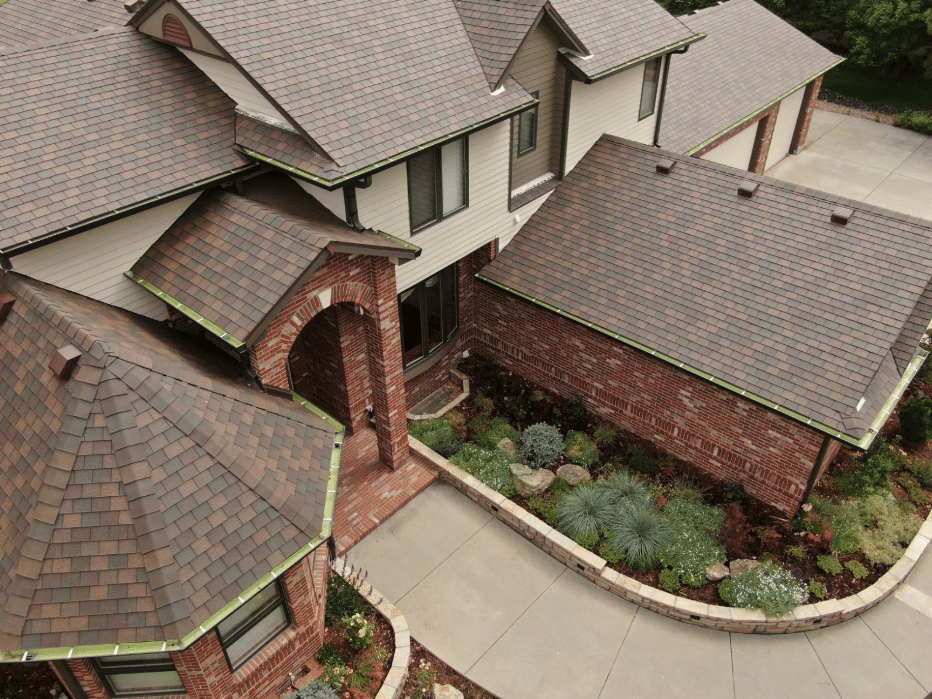
In addition to the different styles and colors these ultra-dimensional shingles offer, there are even more benefits of the REVIA® line from FWave. These shingles are made from a tough, single-piece of synthetic material, so there is no need to worry about layers peeling away or becoming delaminated. They are incredibly resistant to cracking and fading and are UV-resistant, so they will not become weathered as quickly as other materials. Finally, they have a Class 4 Hail Rating, a Class A Fire Rating, and can withstand winds of up to 130 mph.
Choosing the Best Shingles for Your Roof
When you want to choose high-quality roofing that not only looks good but offers a high level of protection, designer roof shingles are the answer. There are so many different styles and colors to choose from, you will have no trouble finding the perfect style for your home.
For an affordable, durable option, the F-WAVE® REVIA® Designer Slate series of shingles is the perfect solution. They are built to last, without ever losing their beauty or protective qualities. Best of all, they are low-maintenance, lightweight, and far more affordable than other designer roofing options.
Contact FWave today to incorporate designer shingles in your home design.
Posted in Designer Shingles5 Reasons Synthetic Shingles are a Better Alternative to Traditional Asphalt
Choosing quality roofing is essential for a beautiful home exterior, and one that is safe as well. Your roof is what helps to protect your whole home from the elements, the Sun, insects, and animals. It also helps to keep your home insulated, so that it stays cool during the summer and warm during the winter and fall.
Asphalt shingles are the most common and affordable roofing option you can find, but as versatile as they are, they aren’t the perfect roofing option. Fortunately, there are some great alternatives to asphalt shingles, including synthetic shingles.
The Problem with Asphalt Shingles
Asphalt shingles are a versatile roofing option with many style possibilities. However, they are not necessarily a durable material. Regular asphalt shingles are very susceptible to damage from high winds–strong storms can easily lift or tear off shingles completely.
Asphalt shingles are notorious for transferring heat into homes, making the temperature difficult to regulate. By attracting so much sun, the shingles can also suffer heat damage at a faster rate, which would require replacing. In addition to the heat-related issues, pooling moisture can also cause problems such as mildew. Asphalt roofs do not have as long of a lifespan as compared to other roofing materials, like synthetic shingles.
5 Reasons Why Synthetic Shingles Are Better
1. Class 4 Impact Resistance

The roof is your home’s first line of defense against many different elements, including potential impacts. Hail, small branches, and other small, hard debris have the potential to cause severe damage to your home. While an asphalt roof will stop the damage to some extent, it would not survive unscathed. Larger pieces of hail and branches can cause asphalt shingles to rip, tear, or come off entirely, which leaves parts of the roof exposed.
Synthetic roofing, like F-WAVE® REVIA® shingles, are made using a commercial-grade polymer material which creates a stronger and more durable product. As a result, REVIA® shingles have a UL-2218 and FM-4473 Class 4 Hailing Resistance Rating. A Class 4 Rating (the highest rating a product can earn) means that these shingles can withstand the impact of a 2-inch diameter steel ball dropped from 20 feet in the air, twice, without showing signs of damage.
2. Highly Wind-Resistant

On average, asphalt shingles are built with a Class D Wind Rating, which means they can withstand winds up to 90 mph. Anything stronger can lead to shingles, or the entire roof, getting torn off, leaving the home unprotected from damaging winds and everything that comes with them.
Synthetic shingles, on the other hand, show their increased durability in these situations making them a perfect alternative to asphalt shingles. Synthetic shingles can range from a Class F Wind Resistance, (which means they can withstand winds up to 110 mph) up to Class H, the highest possible rating, with an ability to withstand winds up to 150 mph. Synthetic shingles are capable of withstanding hurricane-force winds without issue.
3. Class A Fire Rating
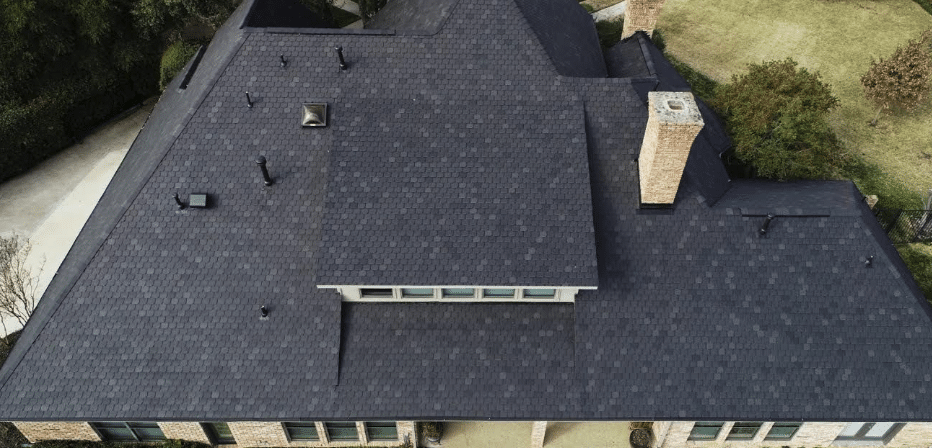
While a fire-resistant coating can be applied to asphalt shingles to increase their fire resistance, it is an extra cost and needs to be reapplied every few years to remain effective. It is extra money and maintenance that not all homeowners enjoy dealing with.
With synthetic shingles, there is no need for extra coatings. All shingles are made with a Class A Fire Rating, the highest fire rating construction products can receive. To earn this rating, roofing has to have prevented a fire from penetrating the “attic.” The spread of the flame does not surpass 6 feet, and it can last two to four hours before actually igniting in flame. Class A Rated roofs have the added benefit of being approved for use in wildfire-prone states such as California, Colorado, and New Mexico.
4. Resistant to UV Rays and Weathering

Asphalt shingles are notorious for absorbing the Sun’s UV rays when not protected by a special UV coating. The absorption of these rays means that homes will have a more difficult time keeping a well-regulated temperature during warmer months when the Sun is the strongest and asphalt shingles are also more susceptible to damage from these UV rays. As a result, they become worn out more quickly and require replacing.
While synthetic shingles are dark like asphalt shingles, they are specially designed to be able to reflect the Sun’s UV rays, which helps the home maintain a steady temperature and allows the shingles to resist weathering better.
5. A Lightweight, Single, Piece of Durable Material
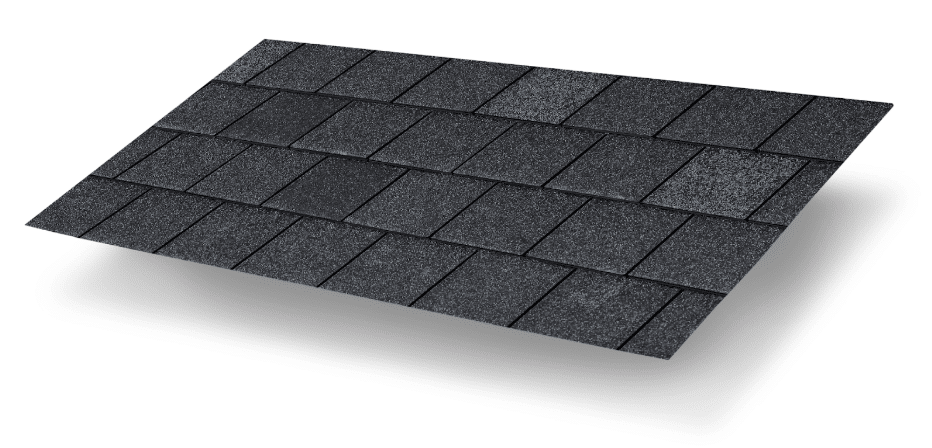
The traditional asphalt shingle consists of multiple layers. Over time, the layers can become worn, peel, and granules can become lost, which leads to cracking and further UV degradation. Asphalt is lighter than materials like wood and slate, but a whole roof can still be rather heavy.
Synthetic shingles are a great alternative to asphalt shingles because of their production process. Synthetic shingles, like the F-WAVE® REVIA® shingles, are made from a single piece of material which makes it extremely lightweight and allows for maximum durability. The unique polymer material means it is highly resistant to tears and is very easy to install.
When it comes to your roof, you don’t want to mess around. It is your home’s first line of defense from the elements and will help to keep your home well-insulated in every season. While asphalt shingles are the traditional choice, they are not the most durable option. Instead, consider one of the alternatives to asphalt shingles, like the synthetic REVIA® shingles from F Wave. These shingles look just like real asphalt shingles but are far more durable in every way.
You will not have to worry about replacing shingles or about them fading over time, and you can rest assured that your home’s roof will always be protecting your home.
Posted in Asphalt Alternatives

